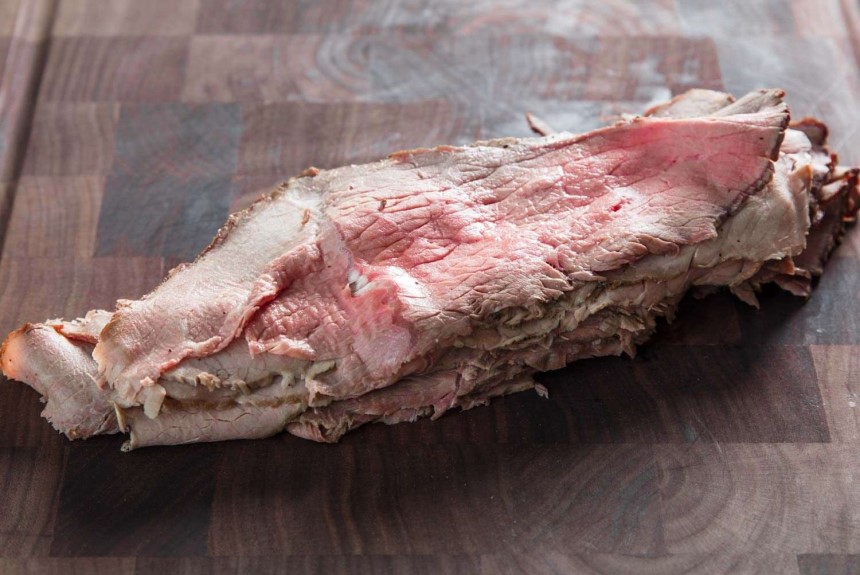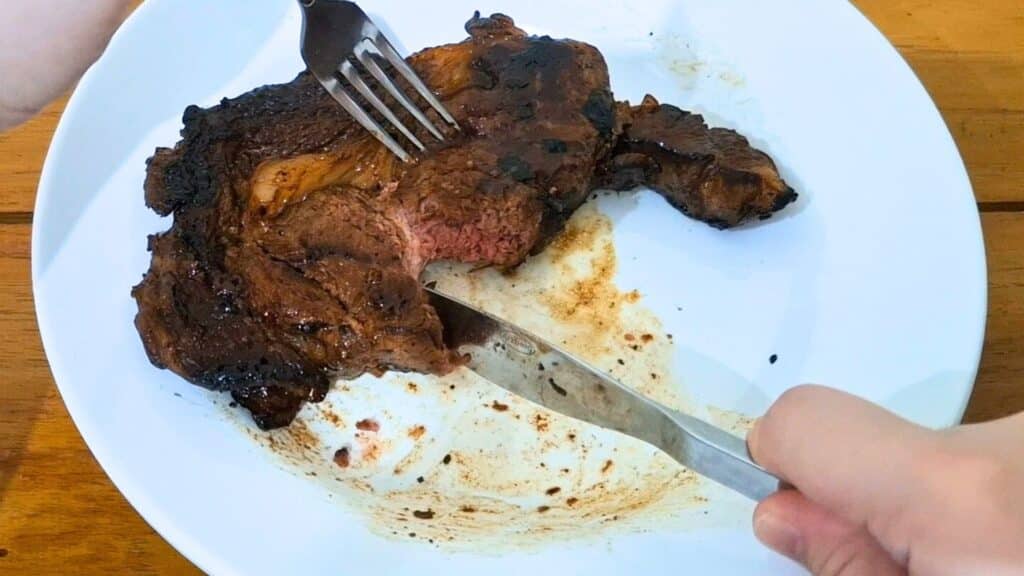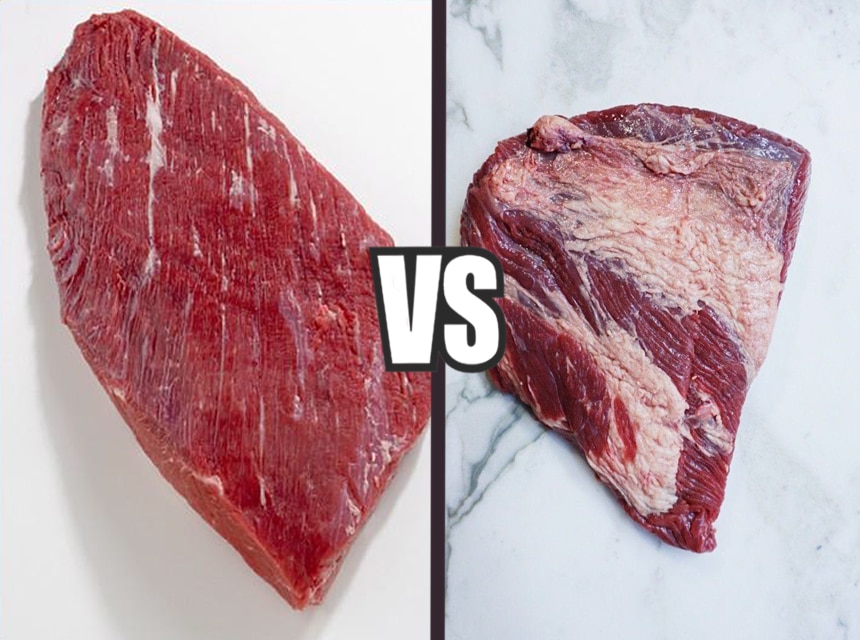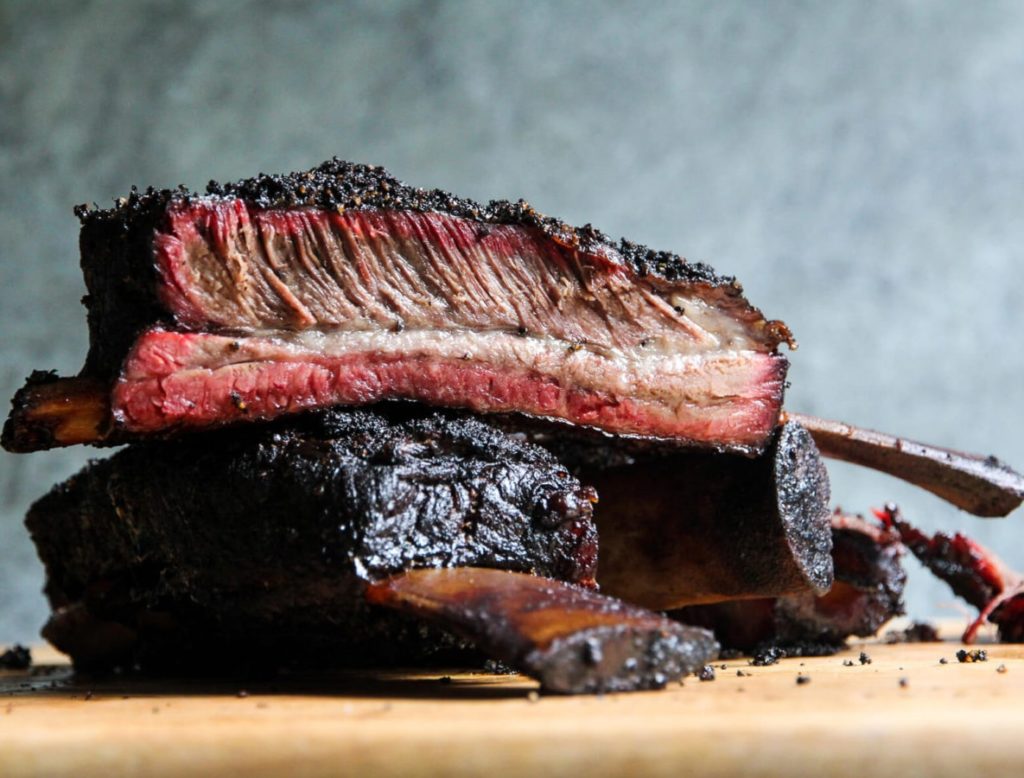

According to many archeological reports, meat is a big part of humanity. Whether it is boiled, fried, chopped, diced, steamed, roasted, or marinated – meat-based recipes have become a staple and are different from each other across several parts of the world. Pastrami and roast beef are two meat-based dishes that have both similarities and differences. Though they are both sourced from beef, they are two dishes that are not eaten in the same form or are even prepared in the same manner. In today’s post, the relationship between Pastrami and roast beef will be explained in detail. The rest of this guide will contain what there is to know about Pastrami and roast beef, the difference in origin, and how both are prepared. Some sections will also be dedicated to their distinct cut types, serving ideas, and storage options. So, if you are set on knowing what truly differentiates Pastrami from roast beef, stay tuned.
Pastrami is a beef-sourced variety of meat delicacies. It is characterized by thin, reddish strips of meat, and it is commonly paired with rye bread for a classic pastrami sandwich. After preparation, the meat contains low calories and a high saturated fat amount. The containing nutrients make it a befitting meal for fitness Trusted Source Healthy Fat' Foods for Your Diet Naturally fatty fish like salmon, mackerel, herring, lake trout, sardines, and albacore tuna are good sources of omega-3 fatty acids. These are “good” fats that help keep your heart healthy. They may also help keep your brain sharp, especially as you get older. The American Heart Association suggests eating two servings of fatty fish a week. www.webmd.com buffs. The term Pastrami is derived from the Romanian word – ‘pastramã – which signifies ‘to preserve or keep.’ It is a convenient name for the cuisine because before it lands on your dinner table, it goes through a traditional method of food storage. This method was only used before the invention and generation of refrigerators. The cut hulk of meat will first go through brining (immersion of the meat in salt water). Then, it needs to be dried, seasoned, and smoked. Only then will you be able to slice it thinly with specialized meat knives and spice it up with mustard or pickles for brunch.

Roast beef has its definition in its name. It is a common meat recipe that is not only very simple to prepare but also delicious. The classic roast beef is prepared from the brisket cut. Other cuts of meat for roast beef include the plate, ribs, the rump, tenderloin, chuck, flank, shank, bottom and eye of the round, tri-tip, and so on. Unlike Pastrami which has a Romanian origin, roast beef is more English and can be traced back to England history. Though you are restricted to roasting with roast beef, you can experiment with different meat coatings, seasoning, and spices.
From the definitions cited above, it is easy to pick out certain differences between the two beef cuisines. Check out the outline below for a precise answer to the differences between Pastrami and roast beef.
As stated earlier, roast beef has a simple English origin and is commonly appreciated for feasts and gatherings as a symbol of togetherness. Whereas, Pastrami was more of a celebrated experiment. Dated back to 1888, Pastrami was introduced to the world’s stomachs by a Lithuanian immigrant, who later on became a butcher and restaurant owner. Some stories say he was sold the recipe, while others say he birthed the recipe off his head.
Either way, it won the hearts of many and soon became a norm, especially when served with rye bread. The original version of Pastrami is sourced from goose breasts, and though it is popularly served as sandwiches, recipes have advanced into other types of dishes with special condiments.
As already mentioned one too many times throughout this guide, the Pastrami is primarily carved from the plate or lower brisket cut of beef. As for roast beef, the options are much wider. Roast beef can be carved out from brisket, plates, rib, flank, shank, round, and sir loins cuts. These areas can be made into several roast beef recipes Trusted Source How to roast beef: Traditional Roast Beef recipe How to roast beef: Traditional Roast Beef recipe. Including how long to cook and carve a rib of beef, also know as Forerib. www.goodhousekeeping.com , including bottom round roast, sirloin top roast, tri-tip roast, the eye of round and bottom round roast, sirloin tip center roast, prime rib roast beef, and so much more.
The process of preparing Pastrami is indeed long. It can take days or even weeks to be completed. The process starts from a method adopted during traditional meat preservation – which is bringing. Brining Trusted Source brine | salt water | Britannica Brine, salt water, particularly a highly concentrated water solution of common salt (sodium chloride). Natural brines occur underground, in salt lakes, or as seawater and are commercially important sources of common salt and other salts, such as chlorides and sulfates of magnesium and potassium. Brine is used as a preservative in meat-packing (as in corned beef) and pickling. In refrigeration and cooling systems, brines are used as heat-transfer media because of their low freezing temperatures or as vapour-absorption agents because of their low vapour pressure. Brine is also used to quench (cool) steel. www.britannica.com involves the soaking or immersion of meat (or any other substance, e.g., pickles) inside the highly concentrated salt water. This immersion needs to be done for several days – or weeks. However, when brining Pastrami, salt water is not enough. You would need to add a few more seasonings like garlic, nitrates, pickling spices, mustard seed, brown sugar, granulated sugar, and kosher salt.
After soaking or brining, the next stage is to prepare it for the smoker by coating it with different condiments. The choice of flavorings you choose depends on your preferred taste. Nonetheless, classic Pastrami is deep-coated with ground coriander seeds and peppercorns. Allow the meat to remain in the smoker for about 5 hours, then remove it, allow it to chill, and slice using only specialized meat cutters. For roast beef, you only need to coat the meat with oil and seasoning before roasting. You can also experiment with different zest and condiments, but traditional roast beef is flavored with just salt and black pepper. Some recipes include the addition of fresh veggies like peas, carrots, potatoes, and so on.

Pastrami is best served as a sandwich, and there are tons of delicious and creative pastrami sandwich recipes. Some of them are the all-time favorite classic pastrami sandwich with rye bread. Another variety with a Russian taste is the Reuben grilled sandwich. But despite all these sandwiches, Pastrami can also be served as a main dish or to accompany other food. It can be added to famous Italian pasta to make pastrami beef pasta. You can also make it a tasty topping for your pizza, tacos, or salad. The list is endless. Whether it is hot or cold, you are good to go, but it is much preferable when served as a hot meal. Roast beef is also a flexible dish that can be eaten both hot and cold.
The most common pairing for pastrami sandwiches is sour pickles with mustard cheese. Nonetheless, you can switch that to cheese and sauerkraut, and you will create a Ruben grilled pastrami sandwich. Other condiments you can experiment with include asparagus, eggs, ketchup, mayonnaise, potatoes, and coleslaw. Whatever you pair it with will determine if you can make it a nice breakfast, lunch, or a savory evening meal. The common pairings for roast beef are different forms of vegetables like potatoes (matched, baked, or roasted), carrots, and peas. But you don’t have to be limited. You can also try butternut squash, onions, green beans, beets, carrots, mushrooms, and Brussel sprouts for a unique taste.
More so, if you don’t want vegetables, pudding is another pairing that will give you the true air of a traditional English meal. As a sandwich, horseradish sauce and mustard are great condiments you can eat with them.
The best way to preserve beef is to freeze it. You can keep Pastrami frozen for up to 3 months, while roast beef will last three months longer. However, to ensure that your beef keeps its freshness and stays protected from germs, it is best to use a vacuum sealer. With it, you can refrigerate your beef for more than five days and still keep it fresh. Note that there are different types of vacuum sealers, and the type you choose should depend on the size and amount of air tightness you will get. Either way, if you sense a foul smell or feel slime on the surface of the meat when you touch it, throw it away.
The following are some of the most frequently asked questions concerning Pastrami vs. roast beef.
Both Pastrami and roast beef can be served as deli meat for sandwiches and other cold lunch meals. Where Pastrami (a cured deli meat) is from the navel cut of beef, a deli roast beef has to be from the round cut (eye, bottom, or top of the cow’s round rump).
Roast beef is relatively healthier than Pastrami. Where roast beef contains no carbs, a good amount of protein, and low-fat content, Pastrami is the opposite. It constitutes carbs, lower protein, and more fat content. The sodium content is also 1870% more in Pastrami than in roast beef.
Roast beef and Pastrami are two completely different beef dishes with just a few things in common. While both can be served in a deli for sandwiches or made into a main dish, they are also beef products. When it comes to what makes them distinct, it includes their origin, cut, size, pairings, servings, nutrient constituent, and so on. However, the big difference between Pastrami vs. roast beef is the method and duration of preparation. Pastrami takes weeks and needs to undergo brining before it is smoked, while roast beef is roasted and will be ready in an hour or two. Nonetheless, these differences do not mean that one meat is better than the other. They are both tasty delicacies, delightful in their way when mixed with savory condiments.





